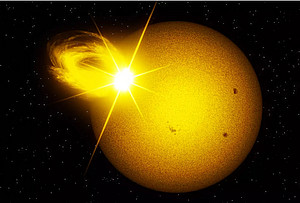Stellar astrophysics
We study stars and their activity using a variety of observational and modeling techniques. Our ultimate goal is to understand the physical mechanisms behind the many manifestations of stellar activity - and to learn how to distinguish them from signals originating from exoplanets and their atmospheres. A special focus of our work is on creating synergies between solar, stellar, and exoplanetary research. We regularly offer exciting BSc, MSc, and PhD research projects. BSc and MSc projects can be carried out at the Lustbühel Observatory.
For inquiries, please contact: lively-stars(at)uni-graz.at
More information is available on the Lively Stars Group website
